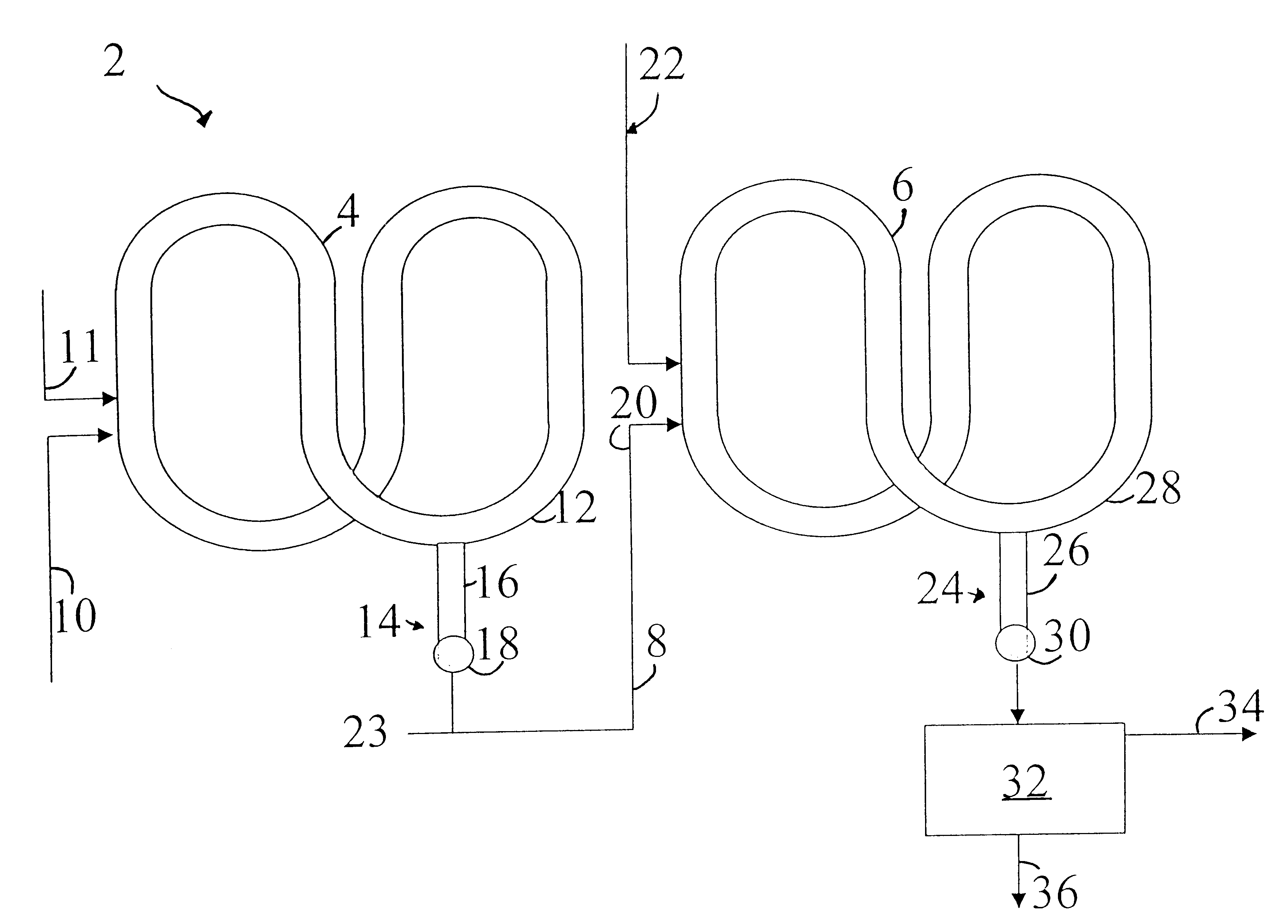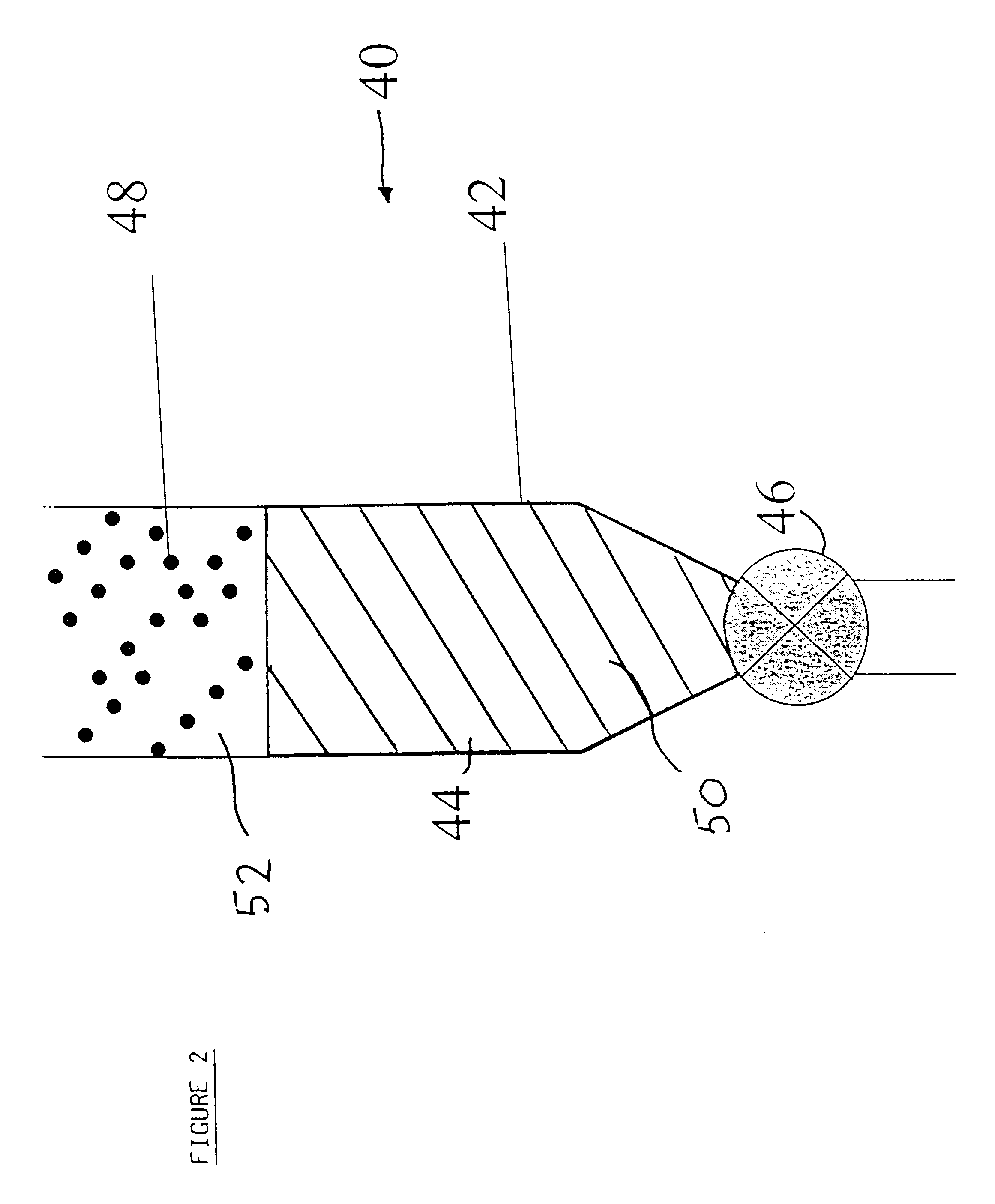Process for producing polyolefins
a polyolefin and polymer technology, applied in chemical/physical/physical-chemical processes, chemical apparatus and processes, bulk chemical production, etc., can solve the problems of not being able to disclose any specific reactor structure indicating how the operation of the reactor may be made more efficient, requiring a relatively high pressure to be employed, and not allowing a particularly high comonomer concentration to be employed in the reactor
- Summary
- Abstract
- Description
- Claims
- Application Information
AI Technical Summary
Benefits of technology
Problems solved by technology
Method used
Image
Examples
example 2
Comparative Example 2
In these Examples, a bimodal polyethylene resin was produced using the conditions shown in Table 2. These Examples are different from Example 1 and Comparative Example 1 in that the relatively low density polyethylene fraction is produced in the second reactor, and the relatively higher density polyethylene fraction is produced in the first reactor. In order that the low density fraction having a high degree of comonomer incorporation must be produced in the second reactor, hydrogen needed to be consumed either between the two reactors or in the second reactor by the use of a costly hydrogenating catalyst. The use of a supercritical diluent in the first reactor allowed a very significant economy of such a hydrogenation catalyst because very little hydrogen transferred from the first reactor to the second reactor. For metallocene catalysts the process using supercritical diluent permits the production of higher molecular weight in the second reactor even without ...
PUM
| Property | Measurement | Unit |
|---|---|---|
| pressure | aaaaa | aaaaa |
| temperature | aaaaa | aaaaa |
| angle | aaaaa | aaaaa |
Abstract
Description
Claims
Application Information
 Login to View More
Login to View More - R&D
- Intellectual Property
- Life Sciences
- Materials
- Tech Scout
- Unparalleled Data Quality
- Higher Quality Content
- 60% Fewer Hallucinations
Browse by: Latest US Patents, China's latest patents, Technical Efficacy Thesaurus, Application Domain, Technology Topic, Popular Technical Reports.
© 2025 PatSnap. All rights reserved.Legal|Privacy policy|Modern Slavery Act Transparency Statement|Sitemap|About US| Contact US: help@patsnap.com



